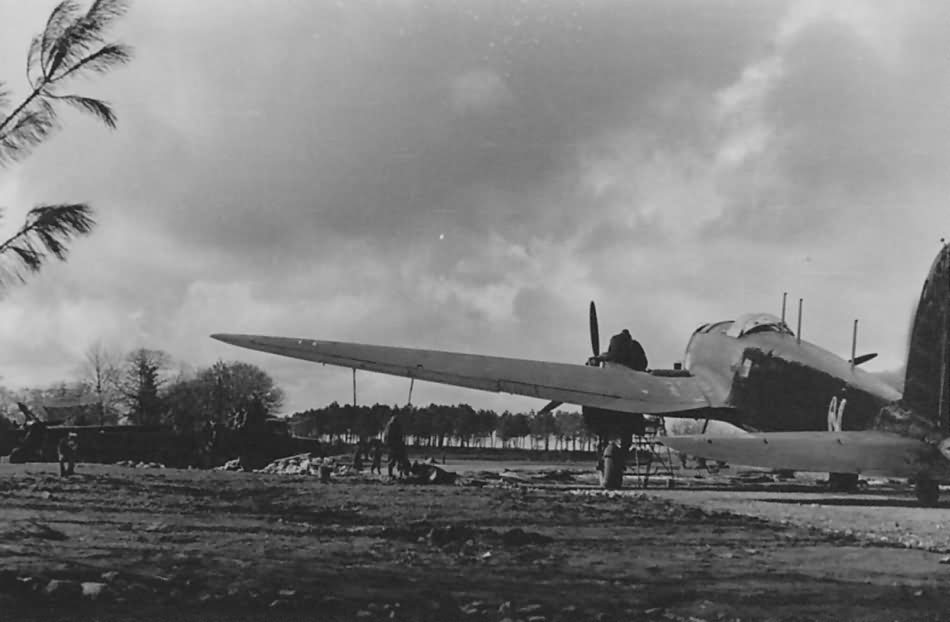The KGr 100 (Kampfgruppe 100), commonly known as Pathfinders, played a crucial and specialized role within the Luftwaffe, particularly due to their advanced radio-navigation equipment. This unit operated various Heinkel He 111 variants throughout its existence, within the broader context of many other Luftwaffe units equipped with He 111s.
KGr.100 (Pathfinders): Specialization and Operations
Formation and Equipment:
- KGr 100 originated as Luftnachrichten-Abteilung 100 (Ln.Abt. 100), activated in early July 1938, initially operating He 111Ps.
- Its special role as a pathfinder unit involved equipping its He 111s with the highly secret X-Gerät radio-navigation device, an automatic bombing guidance system based on radio beams. Some sources also mention the use of Y-Gerät.
- The aircraft of KGr.100 were distinctive, often referred to as “three-masters” due to two additional dorsal aerial masts that housed this specialized equipment. While the X-Gerät was later removed from some aircraft, these prominent aerials sometimes remained, even if non-functional.
Key Operational Deployments and Roles:
- Poland Campaign (1939): Ln.Abt. 100 was redesignated as KGr.100 on November 18, 1939, and attached to X. Fliegerkorps. They flew their initial North Sea missions from Kothen, then Rotenburg.
- Norway Campaign (1940): In April 1940, KGr.100 He 111s were dispatched to investigate shipping off the Orkneys, facing interception by RAF fighters. On May 4, 1940, a KGr.100 aircraft notably sank the Polish destroyer Grom.
- Battle of Britain & The Night Blitz (1940-1941): KGr.100 became a veteran pathfinder unit during the Night Blitz, leading many successful raids. They used the Knickebein navigation system for precision strikes, such as the notorious raid on Coventry on November 14, 1940. Aircraft were often painted with black distemper on their undersides for night operations, making them nearly anonymous. KGr.100 suffered losses during these operations, including aircraft shot down over the Channel by Beaufighters.
- “Baedeker” Raids (1942): KGr.100’s experimental Erprobungskommando XY (XJY-Gerät Trials Detachment) was temporarily transferred to France to lead raids on the UK, though it suffered losses. This unit was later redesignated as 15./KG 6, continuing its pathfinder role, with one instance of a machine reportedly becoming the last He 111 shot down over Britain in WWII.
- Eastern Front (1941-1944):
- Moscow (1941): KGr.100, along with III./KG 26, was transferred from west to east to support the Moscow offensive. Their specialized radio-navigational equipment was removed due to the hurried move, leading crews to even hide their crew chiefs on board during transit. Despite challenges like the absence of ground staff affecting aircraft serviceability, KGr.100 participated in Moscow raids, though sometimes with losses. They conducted night raids from high altitudes, often encountering heavy flak and nightfighter activity. KGr.100’s final mission on the Eastern Front was an attack on Moscow on November 12, 1941, before it was redesignated as I. Gruppe of the newly forming Kampfgeschwader 100 (KG 100).
- Crimea (1942): As I./KG 100, the unit returned to the Eastern Front in January 1942, engaging primarily in anti-shipping operations over the Black Sea from Saki, Crimea. Notable successes included Oberleutnant Hansgeorg Bätcher sinking a freighter and damaging a tanker.
- Stalingrad Supply (1942-1943): I./KG 100 was a key He 111 unit involved in supplying the encircled German forces at Stalingrad, flying missions with full loads of provisions and ammunition to Pitomnik airfield.
- Kursk and Later (1943-1944): I./KG 100 participated in the Battle of Kursk, with their Heinkels identifiable by uniquely positioned yellow theatre bands. The unit was later redesignated to become the new I./KG 4 in October 1943, while the original I./KG 4 became the new I./KG 100. KG 100 continued to operate into 1944, sometimes using He 111H-16 variants as pathfinders for specific targets like Gorki and Yaroslavl.
